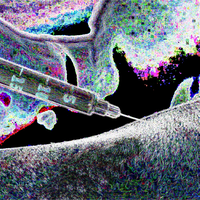| MDMPEA | |
|---|---|
| Molecular structure via molpic based on CDK |
| Physical properties [] | |
|---|---|
| Molecular mass | 179.22 g/mol [1] |
| Predicted LogP | 1.7 [1] |
| Structural Identifiers [] | |
|---|---|
| Molecular formula | C10H13NO2 [1] |
| IUPAC name | 2-(1,3-benzodioxol-5-yl)-N-methylethanamine [1] |
| SMILES | CNCCC1=CC2=C(C=C1)OCO2 [1] |
| InChI | InChI=1S/C10H13NO2/c1-11-5-4-8-2-3-9-10(6-8)13-7-12-9/h2-3,6,11H,4-5,7H2,1H3 [1] |
| InChIKey | OPJOMVMFYOUDPK-UHFFFAOYSA-N [1] |
Homarylamine
Homarylamine (also known as Homarilamina, Homarylaminum, Mdmpea, N-methylhomopiperonylamine, Mk-71, N-Methyl-1,3-benzodioxol-5-ethylamin, N-Methyl-3,4-methylenedioxyphenethylamine, [2-(1,3-dioxaindan-5-yl)ethyl](methyl)amine, (2-(1,3-dioxaindan-5-yl)ethyl)(methyl)amine or 973-580-4) is a
Chemistry
Salts []
Homarylamine is typically found in the form of its hydrochloride salt.
Stereochemistry []
Homarylamine is a achiral mixture
See also []
External links []
References []
National Center for Biotechnology Information. PubChem Compound Summary for CID 10776, Homarylamine. Accessed June 26, 2025. https://pubchem.ncbi.nlm.nih.gov/compound/10776
U.S. Food and Drug Administration; National Center for Advancing Translational Sciences. Homarylamine. UNII: 6FJ4B5B368. Global Substance Registration System. Accessed June 26, 2025. https://gsrs.ncats.nih.gov/ginas/app/beta/substances/6FJ4B5B368
 Anodyne
Anodyne